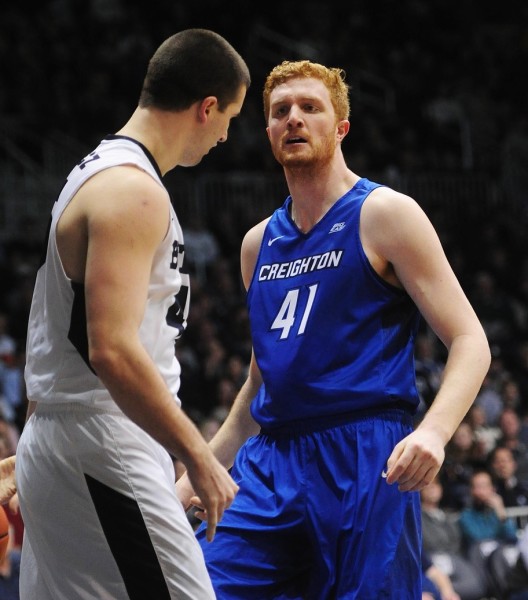Geoff Groselle: The Fuel For Creighton’s Offense
Posted by Justin Kundrat on February 17th, 2016Greg McDermott‘s teams at Creighton have never played particularly fast, as the Bluejays have run classically patient offensive sets capitalizing on efficiency more than speed. In each of the last six seasons, Creighton has ranked among the top 65 in offensive efficiency, three times finishing in the top 10. So upon learning that the team’s average offensive possession length catapulted from 18.4 seconds (167th nationally) last season to 15.8 seconds this year (34th), you might be concerned that the team’s scoring productivity has suffered from a shift in approach. It hasn’t. Instead, the increased tempo has afforded McDermott’s team (17-10 overall; 8-6 Big East) even more opportunities to boost its offensive output.
Creighton’s revamped offense has been sparked by junior transfer Maurice Watson Jr., whose ball-handling and quickness have made him incredibly difficult for opponents to contain. Aside from his raw speed, what makes the diminutive guard so incredibly dangerous is his decision-making. He often keeps his dribble alive when getting into the lane and his court vision enables him to establish multiple scoring threats using Creighton’s pick-and-roll sets. Watson certainly deserves the attention that has accompanied his breakout season, but it’s been another Bluejay –senior Geoffrey Groselle — who has done the dirty work to keep the offense flowing. Groselle is a 7’0″, 240-pound center who was used sparingly during his first two seasons with the team. He became a minor contributor last year in averaging 12 minutes per game, but graduating players offered an opportunity for advancement. Groselle has taken the challenge and excelled this year, averaging 10.3 PPG and 5.7 RPG on 67.5 percent shooting (12th nationally in field goal percentage). But it isn’t Groselle’s scoring that enables Creighton’s potent and balanced offense (the Bluejays have eight players averaging more than 6.0 PPG) — rather, it’s his movement without the ball that makes things work. This skill is best demonstrated with video analysis.










































